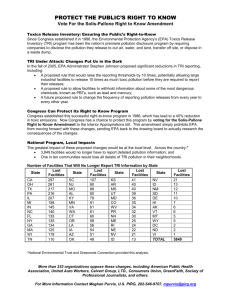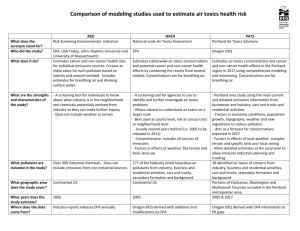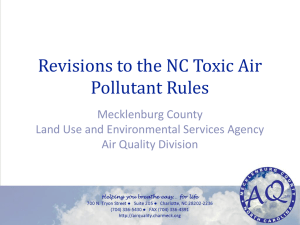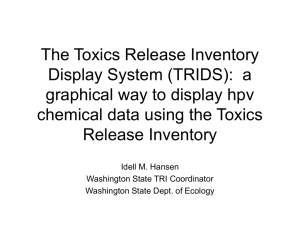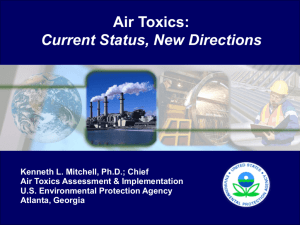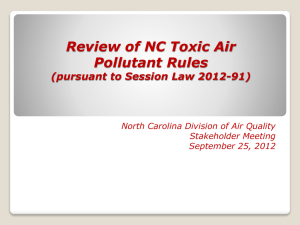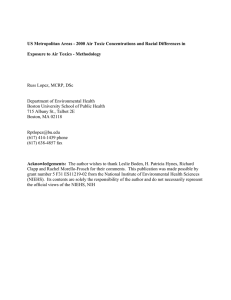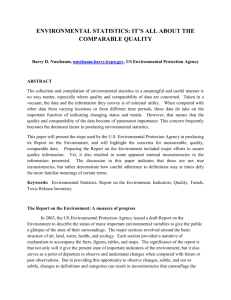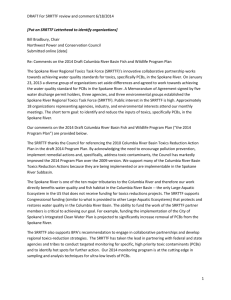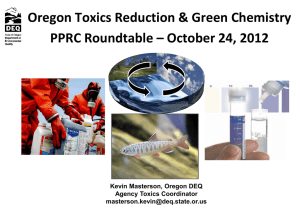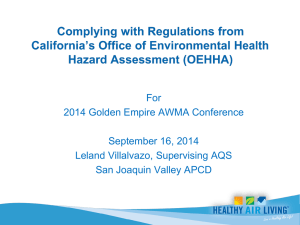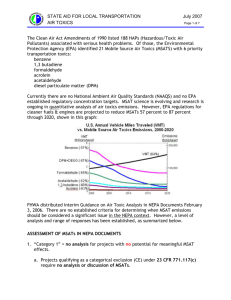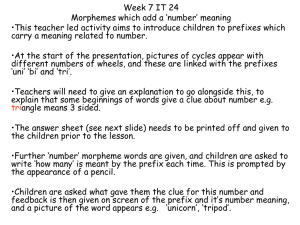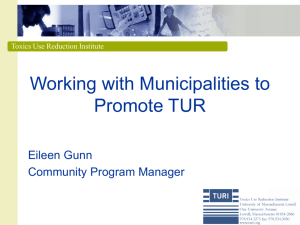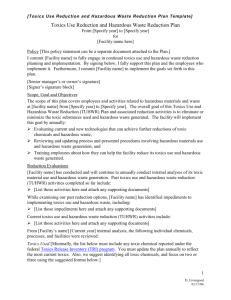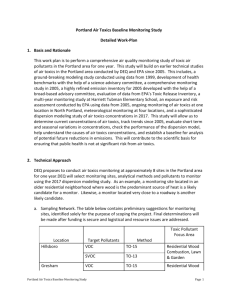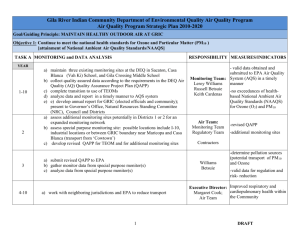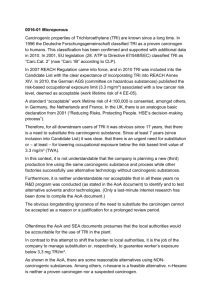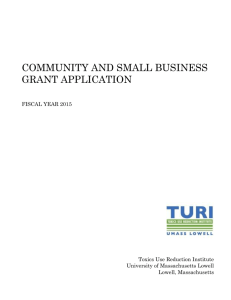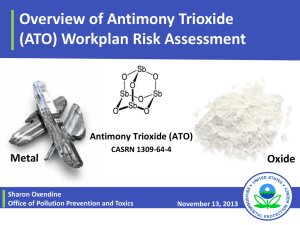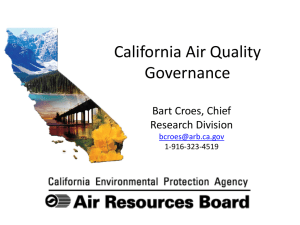Does the Toxics Release Inventory Program Work
advertisement
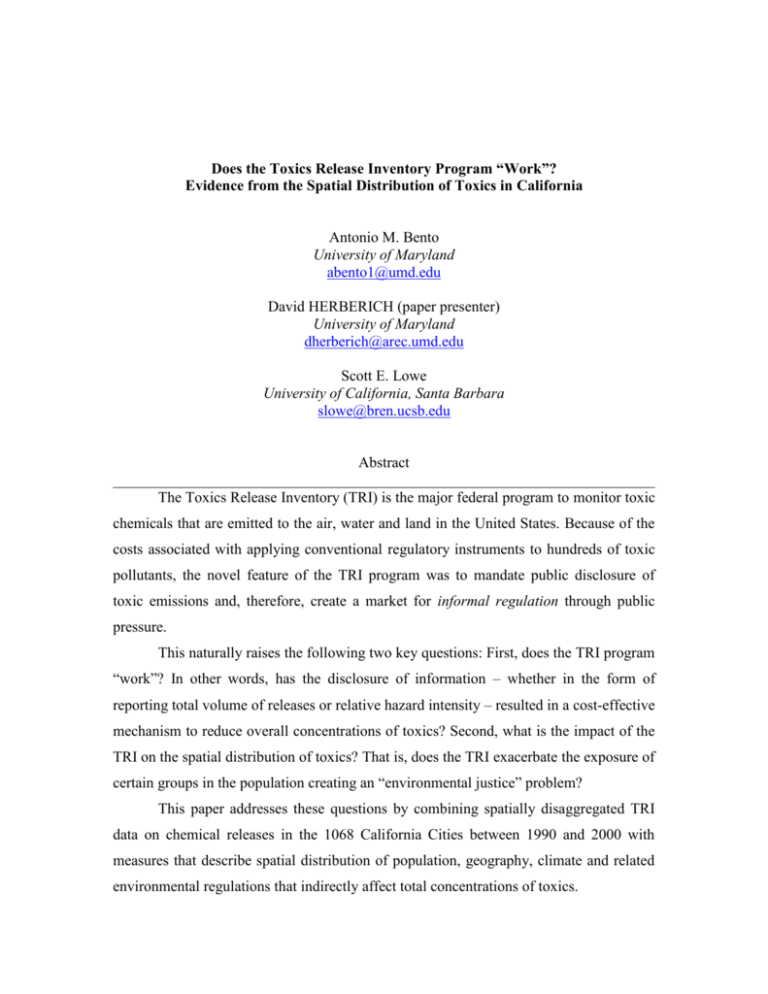
Does the Toxics Release Inventory Program “Work”? Evidence from the Spatial Distribution of Toxics in California Antonio M. Bento University of Maryland abento1@umd.edu David HERBERICH (paper presenter) University of Maryland dherberich@arec.umd.edu Scott E. Lowe University of California, Santa Barbara slowe@bren.ucsb.edu Abstract ________________________________________________________________________ The Toxics Release Inventory (TRI) is the major federal program to monitor toxic chemicals that are emitted to the air, water and land in the United States. Because of the costs associated with applying conventional regulatory instruments to hundreds of toxic pollutants, the novel feature of the TRI program was to mandate public disclosure of toxic emissions and, therefore, create a market for informal regulation through public pressure. This naturally raises the following two key questions: First, does the TRI program “work”? In other words, has the disclosure of information – whether in the form of reporting total volume of releases or relative hazard intensity – resulted in a cost-effective mechanism to reduce overall concentrations of toxics? Second, what is the impact of the TRI on the spatial distribution of toxics? That is, does the TRI exacerbate the exposure of certain groups in the population creating an “environmental justice” problem? This paper addresses these questions by combining spatially disaggregated TRI data on chemical releases in the 1068 California Cities between 1990 and 2000 with measures that describe spatial distribution of population, geography, climate and related environmental regulations that indirectly affect total concentrations of toxics. Unlike previous studies, we first develop an analytical model based on the modern political economy literature that aims to capture the process that influences the decision of facilities to reduce emissions. This process reflects a game played by the following agents: a regulatory agency that discloses the information; an environmental lobby group that uses the information to document exposure of pollution and educate voters; industry groups that lobby the agency not to release information or to modify the rules regarding releases; and the populace that elects the representatives to the regulatory agency and are exposed to pollution. The model clearly illustrates the key determinants of the changes in the spatial distribution of toxics and is used to guide the choice of variables in our empirical analysis. Our preliminary results suggest that the TRI indeed reduced overall concentrations of toxics in California cities between 1990 and 2000. However, these reductions were not uniform, reflecting the contributions of other factors to the drops in the concentrations of toxics. An important result is that because of the impacts of the Clean Air Act on the migration of facilities (in particular, facilities in southern California cities which were out of compliance), the impact of environmental regulations which were not designed to regulate toxics produced a larger effect than the disclosure of TRI information itself. We also find that poorer neighborhoods experienced greater reductions in toxics between 1990 and 2000, suggesting that environmental lobbies are using the disclosure of information to target campaigns against facilities located in those communities.
